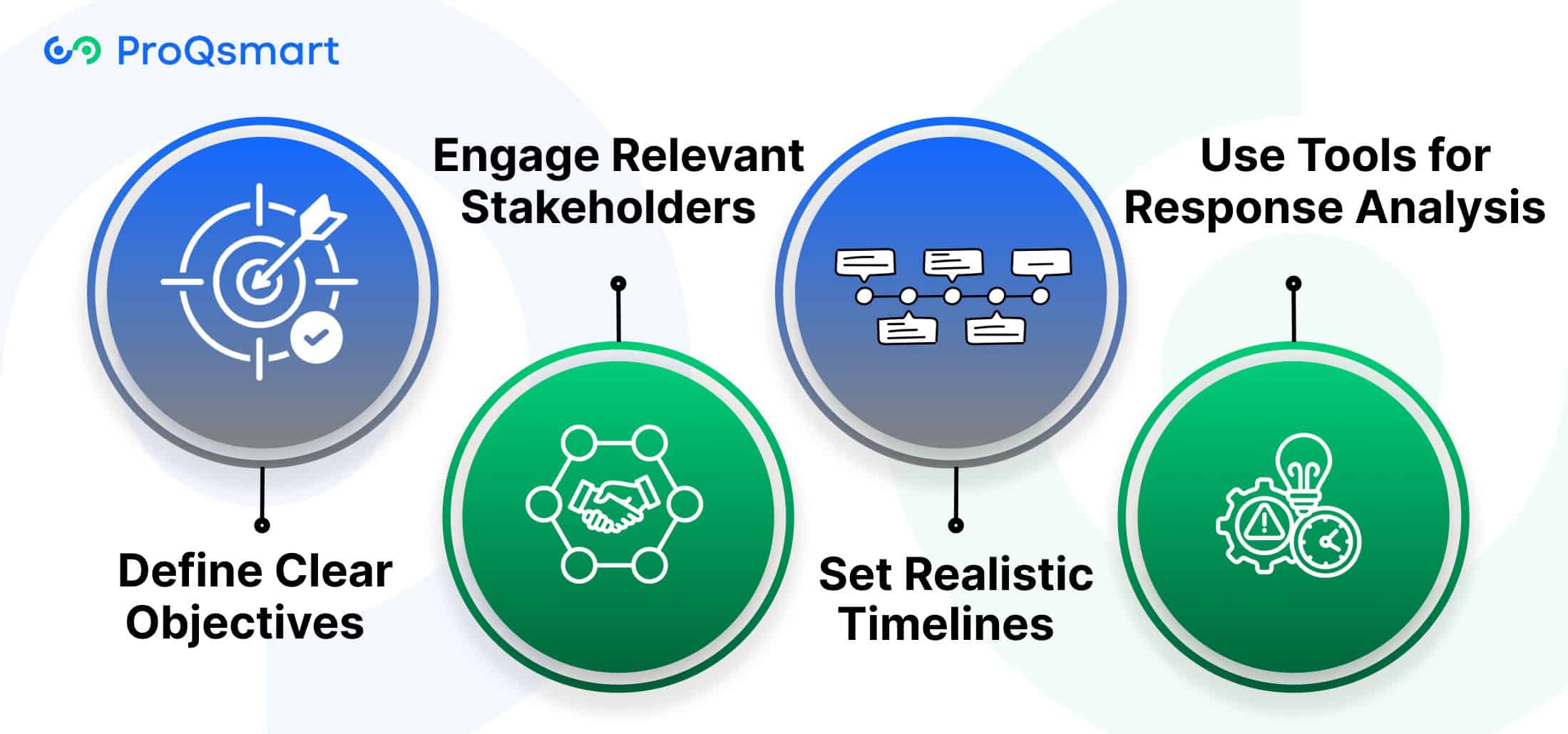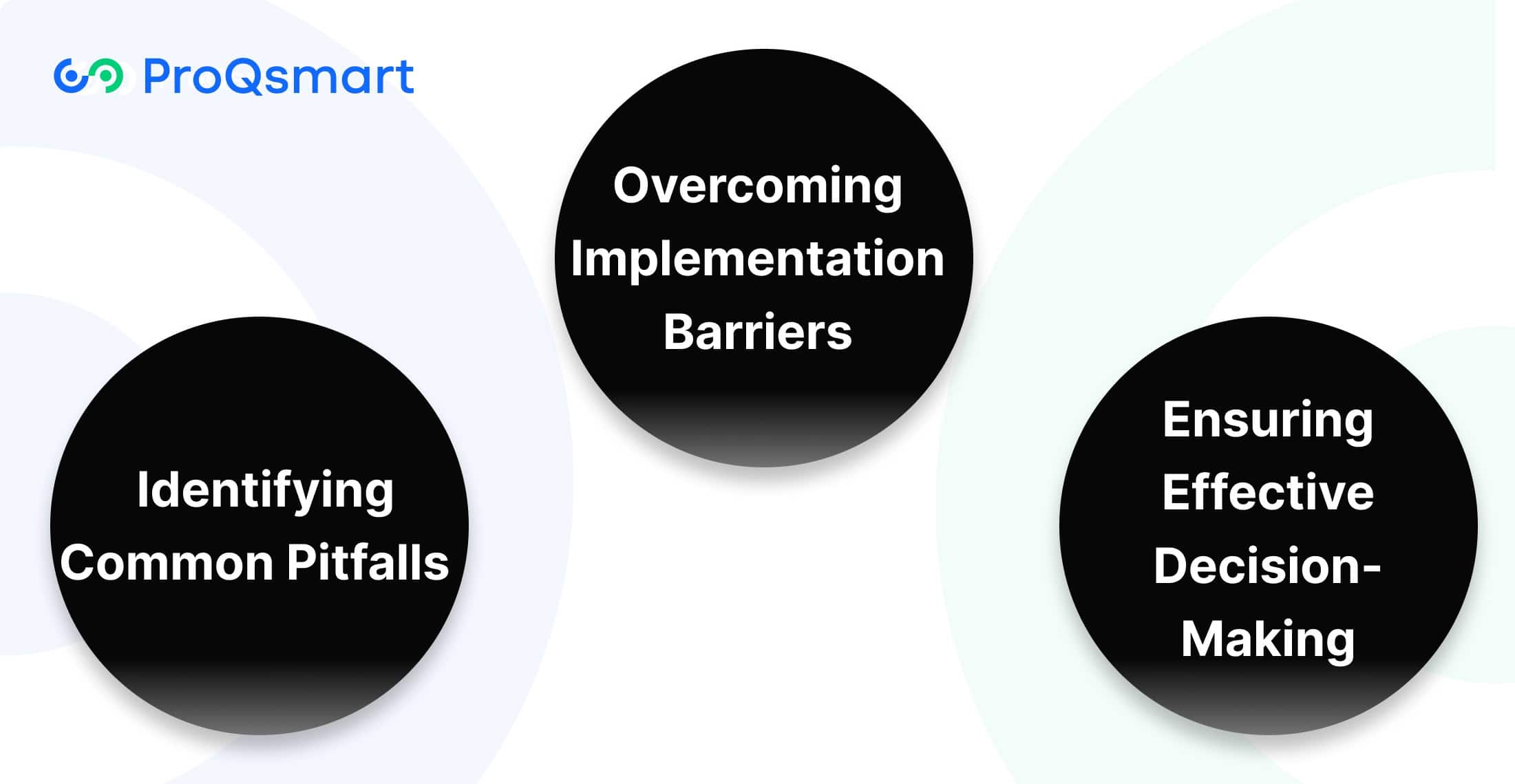In the manufacturing industry, effective supplier selection is critical to achieving operational excellence and maintaining competitive advantage. A Request for Information (RFI) is a formal document that organizations use to gather essential information from potential suppliers during the initial stages of the procurement process. By leveraging RFIs, manufacturers can assess vendor capabilities, product offerings, and service levels, enabling them to make informed decisions that align with their specific operational requirements.
The structured nature of RFIs ensures transparency and consistency in the information-gathering process, allowing manufacturers to identify the most suitable suppliers while minimizing risks associated with procurement. By streamlining supplier evaluation and fostering a deeper understanding of market offerings, RFIs not only save time and resources but also contribute to building strong, strategic partnerships. This article explores how RFIs enhance supplier selection in the manufacturing sector, highlighting their role in facilitating informed decision-making and effective supplier management.
Importance of Supplier Selection
The supplier selection process is an essential part of procurement. It establishes the basis for realizing goals of quality, value, and seamlessness. It helps organizations develop lasting partnerships with trusted suppliers that support their mission and business objectives.
A thorough Request for Information (RFI) can be one of the most effective supplier selection tools. RFIs are more than a data gathering exercise. They set the stage for transparency and speed, enabling procurement teams to drive smarter decisions and uncover more innovative offerings.
Ensuring Quality and Reliability
Making effective supplier selection choices based on quality/reliability history will have a direct impact on successful manufacturing. Suppliers that adhere to tight quality requirements assist enterprises in preventing product flaws, delays, or interruptions in service.
Setting clear evaluation criteria, such as requiring an evaluation of certifications, production capacity, and demonstrated past performance, is important. An RFI can help uncover the ability and experience levels of prospective suppliers. The answers to this question paint a realistic picture of their capacity to deliver on your requirements.
Eighty percent of organizations are still bogged down by filtering potential vendors through RFIs. This reliance makes it imperative to ensure the highest standards of product and service excellence are maintained.
Achieving Cost-Effectiveness
Take supplier selection for example—it’s a key part of controlling costs. Procurement teams often achieve efficiency gains of 30% to 80% by carefully evaluating supplier options, including pricing, quality, and service.
Cost cannot come at the expense of reliability, performance, or long-term return on investment. A supplier who has the capability to deliver the cheapest prices, yet does not have the quality, would eventually increase costs in operations.
RFIs give the government a better understanding of what is possible in the market. They guide you towards prudent choices that meet your fiscal and operational priorities.
Overcoming Common Supplier Challenges
Obstacles like lack of requirements, lack of clarity, lack of detail, and lack of communication are common roadblocks to successful supplier selection. A well-written, thoughtful RFI mitigates these problems by setting expectations up front and ensuring a transparent process.
For example, asking specific questions within an RFI ensures relevant responses, allowing procurement teams to narrow down which suppliers can be relied on. Keeping the lines of communication open and investing in long-term partnerships helps reduce risk and drives mutually beneficial development past ad hoc deals.
With clear and consistent leadership and strong partnerships between agencies and at all levels of government, success is possible.
Purpose of an RFI in Manufacturing
An RFI is an important tool in the early stages of procurement. It plays a crucial role as an example in the manufacturing sector. It is a formalized process for collecting comprehensive information from qualified vendors regarding products or offerings.
RFIs narrow in on specific questions around materials, specifications, design drawings, standards, and contract information. They assist companies in defining their needs before moving too far ahead. This step is of enormous consequence in manufacturing.
Exacting inputs, such as the grade of steel and exact tolerances in machined components, can have a huge impact on production quality and costs. For instance, submitting an RFI to determine the compatibility of materials with existing machinery can prevent costly delays or rework.
Within the larger procure-to-pay process, RFIs serve as a key component in empowering smarter decision-making. They let buyers gauge supplier capabilities, compare product and service offerings, and evaluate potential risks.
This is especially important when choosing solutions such as ERP systems or EHRs, where features and interoperability are key. RFIs make the transition to formal processes such as RFQs or RFPs much smoother by helping to focus the search on a smaller group of qualified suppliers.
With eight hours on average to process an RFI, the burden in time and expense is daunting. This highlights the importance of timely, focused, and effective submissions.
Key Elements in the RFI Process
The RFI process can be one of the most valuable aspects to a successful procurement. It allows us to distill important information from various potential suppliers. A clear and thoughtful RFI process leads to greater transparency, lower project risk, and more informed decision-making.
To realize these benefits, knowing what key elements to focus on, being clear about your goals, and taking a methodical approach are key.
Information Typically Requested
RFIs usually ask for very detailed information to compare suppliers side by side. Commonly included information consists of:
Suppliers submit their past experience, capacity, and know-how.
This establishes whether offerings align with project requirements.
Ensures suppliers meet mandatory legal and quality benchmarks.
For instance, in construction projects RFIs may seek certification or warranty information for raw materials to ensure quality assurance.
Steps in the RFI Process
To conduct a seamless RFI process, organizations typically follow these steps:
Write direct, specific questions that limit the opportunity for misinterpretation.
Distributing the RFI to potential suppliers: Use platforms like ProQsmart for streamlined distribution.
Score and rank according to criteria linked directly to the goals of the project.
Automating these steps with tools such as ProQsmart minimizes manual error and speeds up plan submittal times.
Establishing Clear Guidelines
Setting clear parameters for what you’re looking for is key to getting quality responses. Define what the submission deadline is, how submissions should be formatted, and how submissions will be evaluated.
For instance, if suppliers know what format you want the responses in, they will be better equipped to give you the most relevant, complete answers. Misunderstandings are reduced, increasing speed and ensuring precision.
Benefits of Using RFIs for Supplier Selection

Request for Information (RFI) documents serve as critical initiatives for organizations aiming to streamline the supplier selection process. By utilizing RFIs, companies can gather vital information from vendors in a structured format, allowing them to compare various solutions effectively. This approach ultimately empowers organizations to make informed decisions while fostering transparency and collaboration.
1. Facilitating Comprehensive Data Collection
RFIs are an essential tool to help you collect detailed information from all potential suppliers. As a result, this process helps businesses truly compare various capabilities, offerings, and services. This massive dataset provides a tremendous opportunity for decision-makers to use it to spot trends.
For instance, tools like ProQsmart increase inventory accuracy rates to more than 95% and reduce stock losses by 15%. By understanding these patterns, firms can better align their procurement strategies to the direction the market is moving in.
RFIs can help guarantee that underrepresented communities have access to important insights, empowering them to make strategic decisions that benefit their businesses.
2. Pre-Qualifying Potential Suppliers
In this case, using RFIs as a pre-qualification tool makes it easier to narrow down your supplier list. This step helps eliminate the wrong vendors from the beginning. It evaluates their capacity to deliver on critical requirements, such as the ability to scale and keep pace with business expansion.
For instance, ProQsmart’s subcontractor management functionality automates pre-qualification, making the process faster and easier while keeping you compliant. This more selective approach enables organizations to seek out suppliers who are better aligned with their long-term strategic objectives.
3. Standardizing Evaluation Criteria
Among other benefits, RFIs can help you set clear metrics for how you will evaluate suppliers. By using standardized criteria, a level playing field is created that will allow for objective comparisons of all responses.
These frameworks help to minimize bias and focus decision-makers. ProQsmart’s supplier performance monitoring feature helps this process by continuously evaluating vendors’ capacity to fulfill requirements per contractual expectations.
Not only do these tools make procurement more efficient, but they help ensure departments align with organizational priorities.
4. Improving Communication Between Parties
RFIs encourage clear, open dialogue between companies and suppliers. That clarity is key to building trust and strong partnerships. Encouraging conversation around RFID technology can help highlight the positive impacts it brings.
For example, it lowers inventory holding costs by 18%, freeing up creative capacity for both suppliers and buyers. Platforms such as ProQsmart further improve this communication through real-time collaboration tools, keeping all stakeholders on the same page at every step of the procurement cycle.
Best Practices for Conducting RFIs

By prioritizing clarity, collaboration, and innovative technology solutions, organizations can more efficiently drive toward better outcomes while saving time and money. Here, we outline best practices for improving your RFI process.
Define Clear Objectives
Developing specific goals and purpose is key to a productive RFI. Organizations should determine clear objectives, like learning about the market, understanding suppliers’ capabilities, or exploring potential solutions.
These objectives should drive the RFI document itself so that questions are focused and relevant to the context. For example, providing a clear question along with your preferred solution allows suppliers to avoid wasting time and resources on ineffective responses.
Aligning RFI objectives with broader procurement strategies strengthens consistency and sets the stage for long-term value. With a well written RFI document, including a clear and simple subject line and specific description of the problem, responders can react quicker and with more relevant information.
Engage Relevant Stakeholders
Including key stakeholders makes the RFI process much more effective by including different perspectives. Engagement from procurement teams, technical experts, and end-users can help inform the RFI, resulting in more meaningful information collected.
With all parties involved and collaborating, there is less chance of rework as all concerns can be discussed at once. An example would be when subcontractors are submitting RFIs, they get better cross-functional input to create more complete RFIs.
ProQsmart’s collaborative tools allow for collaborative and interactive stakeholder engagement in real-time, facilitating more efficient communication and decision-making.
Set Realistic Timelines
Realistic timelines set proper expectations, saving everyone from future disappointment should things take longer than promised. Partner organizations must build in the time needed to create, analyze, and review RFIs.
By accounting for potential delays, like supplier response times, work flows more smoothly. With RFI management software, contractors can share updates with the click of a button, removing bottlenecks from the process.
Use Tools for Response Analysis
Technology makes response evaluation much easier. Analytical tools automate large data processing and help focus on actionable insights.
ProQsmart’s AI-driven platform enables accelerated data visualization, allowing procurement professionals to more quickly understand the complexities of supplier information. Features such as supplier performance monitoring help to make the choice an informed one.
Addressing Challenges in the RFI Process

Navigating the Request for Information (RFI) process can be challenging, yet it serves as a vital resource that empowers organizations to make informed procurement decisions. By identifying major pitfalls and addressing barriers to implementation, businesses can leverage RFI responses to enhance their service offerings and support critical initiatives, ultimately leading to successful outcomes.
Identifying Common Pitfalls
An all-too-common problem with RFIs is the use of unclear or excessively broad questions, which can lead to suppliers submitting incomplete or out of scope responses. This makes evaluation of vendor proposals all the more difficult. For instance, asking the question, “What services do you offer?” without the context and purpose of the project in mind leads to vague and generic proposals that fail to meet the required safety solutions.
The second most frequent mistake is poor follow-through. Without follow-up clarification or requests for further detail, organizations risk incomplete supplier evaluations, which undermines their entire supplier selection process. To mitigate this, companies should consider implementing a management platform that ensures clarity and completeness in RFI responses.
Posting post-RFI reviews would be a common-sense action to expose these deficiencies. For example, if supplier reluctance is caused by fears of intellectual property theft, companies can guarantee confidentiality from the start, thus fostering a more secure and trustworthy environment for all parties involved.
Overcoming Implementation Barriers
These barriers—be it a lack of expertise, resources, or leadership buy-in—frequently stand in the way of a successful RFI. Staff lacking adequate education will have difficulty crafting RFIs or evaluating responses to them, leading to poor supplier decisions.
To remedy this, companies need to commit more money to industry-focused training programs. For example, hands-on workshops focused on evaluating RFI data can help teams build the skills necessary to select the most suitable suppliers.
Ensuring Effective Decision-Making
RFIs can be incredibly useful for thoughtful decision-making, particularly when the data collection is robust. Comprehensive data clarifies supplier capabilities, aligning selections with strategic goals.
For instance, requiring analysis of supplier performance history makes sure decisions are making the right long-term moves. With an average reply time of 6.4–10 days, it is essential to plan ahead to ensure you are not caught waiting and missing out on opportunities.
Making the process more efficient with AI-driven solutions, such as ProQsmart, increases the quality of decision-making. Its budget-driven procurement and supplier performance monitoring capabilities promote transparency and alignment with organizational goals. This is not only a cost-savings measure, but it limits the risk of overruns for the project.
Metrics for Evaluating Supplier Responses
Define specific metrics by which to judge supplier responses. This will simplify the procurement process and better position it to further your organizational objectives. A clear, explicit framework makes it easier to compare them and helps you make the most accurate decision possible.
It’s been found that 57.1% of procurement success arises from strong supplier evaluation criteria, highlighting the need for it.
Criteria for Comparison
When comparing supplier responses, consider these critical criteria for evaluating vendors and their proposals.
Assess total costs, including hidden fees, discounts, and payment terms.
Evaluate adherence to quality standards, certifications, and defect rates.
Check past performance records for on-time delivery rate and ability to accommodate rush orders.
Tools for Analyzing Responses
Use tools that automate workflows, such as ProQsmart, where transparency and real-time collaboration are built into the software. Its AI-powered tools are providing analytics that improve evaluation and boost overall efficiency by up to 80%.
Data-backed tools cut out the guesswork, allowing procurement teams to make the best decisions possible in a fraction of the time.
Making Informed Vendor Choices
Leveraging RFI insights helps to make sure decisions are made with an eye towards achieving strategic objectives, such as reducing costs or spurring innovation.
To build sustainable, mutually beneficial partnerships, ProQsmart’s supplier performance monitoring uses historical data to help you make better supplier selections. Ongoing process improvement makes results even better.
Conclusion
By using an RFI global, you can be confident in your final selection of the most qualified vendor. This approach provides you with certainty, lowers risks, and reduces transaction costs. It’s more than just an information-gathering process; it challenges you to consider what’s best for your organization. The outcome of this work has been stronger supplier partnerships and improved project outcomes in critical initiatives.
Be uniform in both drafting and reviewing RFIs. Clear goals, easy-to-use templates, and strong metrics go a long way. Issues such as dodgy replies or ghosting? Tackle them as soon as possible with direct communication and consistent follow-up to ensure effective vendor management.
RFIs are most effective when you utilize them to their full potential. They can bring much-needed clarity and discipline to the process of supplier selection. To optimize your RFI process and unlock even greater benefits, consider using ProQsmart. This innovative management platform is designed to streamline procurement processes and enhance decision-making, empowering businesses to achieve greater efficiency and strategic alignment in their supplier selection.
Ready to transform your RFI approach? Schedule a demo with ProQsmart today and discover how our life safety solutions can enable you to achieve better decisions and improved operational performance.




